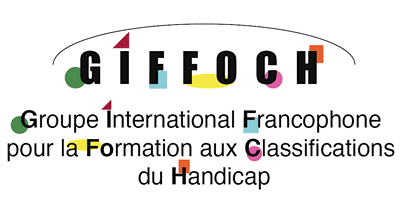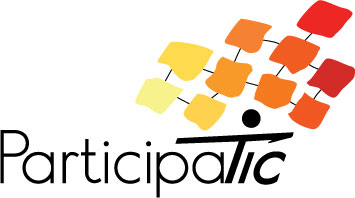

At the meeting of 7 & 8 June 2018 the consortium met in the premises of EHESP in Saint-Denis, Paris area and drew up an inventory of remaining work to accomplish to complete the finalized version of the multilingual platform including its translation in Romanian in the first three months of the year. This also includes the Methodological Guide.
The ParticipaTIC Platform
With respect to the interface following preliminary tests, a certain number of modifications were made. These include changes to contrasts in colour. A bar comprising different domains of accessibility was designed. On the bar one may find the following themes: “contrast” in yellow with a black background; options for problems of reading/seeing “Listen”, and options to increase the font size of texts. The detailed working of these various accessibility options were fully described along with the impact on design of learning input.
In March 2018 a first series of tests in different countries highlighted a number of pedagogical and technical problems. Analysis of test results led to the introduction of a number of modifications and improvements to the platform. A second series of test was recently carried by the LOUSTIC and the results forthcoming by July will enable further more substantial modifications and improvements to be introduced.
As agreed, a series of tests were also carried out in different countries during the month of May.
A second series of tests is to be undertaken during the month of September 2018. Each group is invited to test the different streams of accessibility and how they render the learning content more accessible. The test protocol is much more flexible, but each partner should fill in an online questionnaire so as to provide feedback for the October meeting.
The idea of competencies in Moodle
In Moodle a tree of competencies must be set up at the administrator level. The associated arborescence should be strictly respected with unambiguous and precise labelling. The list of competences this drawn up allows the creation of learning pathways. An overview of defined competencies was presented, however the links between ‘badges’, competencies and learning pathways still need to be clearly defined.
The different module working groups (2, 3 and 4) present the state of work in their modules. Each module should in fact be finished – that is, tested and finalised – for the Brussels meeting to be held on 13 & 14 December. Each group has also been encouraged to test their partner modules (videos, quiz, etc.).
Project Dissemination
We visited the auditorium of the Centre for Human Sciences. This where the dissemination events will occur. It has a capacity of some 300 places with 7 places for wheelchair users in front of the stage. There will also be a giant screen allowing the display of documents, web conferencing and the projection of simultaneous transcription for people with hearing difficulties/deaf people. Technical assistance will be provided.
A meeting to discuss the dissemination events took place at the Catholic University of Lille. Following this, preliminary drafts of the programme together with arguments to justify the different suggested sections and speakers, were sent to the partners.
We still have to choose a visual identity to be seen on the platform welcome page and on a paper-based “postcard” format which are the dissemination tools for the project. A first draft version, made by students from the Belgian training school HELB-IP- Art therapy section, was presented. Their proposal was globally approved with a few suggestions.
The accessibility guide and the methodological guide
The format and the content of these “guides” were discussed within the dedicated working group and modified as follows: the accessibility guide will be made of thematic technical sheet with summaries at the end of each part. The format and content of the methodological guide were discussed among partners. Focus is to be made on pragmatic topics and based on our live experience in the project. The ADDIE model (Analyse-Design-Development-Implementation–Evaluation) was proposed as a structure for this guide.
Follow us !
![]() Linked’in : https://www.linkedin.com/groups/8633531
Linked’in : https://www.linkedin.com/groups/8633531
![]() Facebook : https://www.facebook.com/ParticipaTic/
Facebook : https://www.facebook.com/ParticipaTic/
![]() Twitter : https://twitter.com/Participa_TIC
Twitter : https://twitter.com/Participa_TIC

